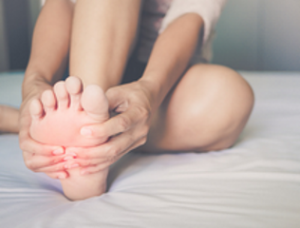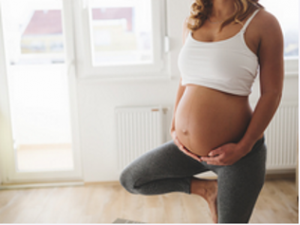Although exercise is a wonderful way to get your daily dose of physical activity, it is still important to remember that stretching to cool down legs after exercise is an essential part of the routine.
We know this probably seems redundant since you have done all that work running or playing tennis, or whatever you enjoy, but the repetitive actions of the exercise cause the muscles and tendons to expand and contract.
Stretching helps get them back into the proper shape, so that you are not so sore later on, and so that you avoid damaging the muscles, tendons and ligaments either through inflammation or tearing.
You’ll notice that whenever you watch a professional work-out video, or you attend local aerobics classes, the session doesn’t end until the instructor completes the wind-down exercises. They are part of the complete circle, starting with warm-up and ending with cool-down.
If you wanted to test the theory yourself, try doing your normal exercise without the stretching and see how you feel. The next day, add some stretches before and after, and notice how much better not only your legs feel, but your whole body. All the parts are in harmony.
#1 Stretches For Better Metatarsalgia
Metatarsalgia is a condition where the front or ball of the foot is inflamed or injured. It is often quite painful and causes limping and immobility.
There are many reasons individuals end up with this condition, but some of the more common ones are:
- Wearing High Heels – the constant downward pressure from the back of the foot being held up, and the front being pushed into the toe of the shoe, continually wears away at the metatarsal bones and muscles.
- Bad Footwear – shoes and boots that are either poor fitting or poorly made do not help the balls of the feet. Likewise, shoes with no support are problematic, because the feet are pounded into the ground instead of the footwear absorbing the shock of walking or running.
- Stiff Achilles – this is one area of the body that benefits from stretching to cool down legs after exercise. When the tendon is not properly lengthened, not only is there pain in the heel and the back of the leg, but also, it affects the ball of the foot.
- Arthritis or Gout – since both of these diseases cause inflammation in the balls of the feet, they actually cause the Metatarsalgia.
Undoubtedly, there are many more causes of this all-too common affliction, but in many cases, it can be improved with stretching.
#2 Stretches For Better Metatarsal Bursitis
Again, this deals with the ball of the foot. Surprisingly, the area is complex, as it does involve joints, bursae, bones, and tendons. Most of the same causes and treatments as Metatarsalgia are evident with Metatarsal Bursitis.
Bursitis can be a form of Metatarsalgia, specifically relating to the fluid-filled sac called the bursa.
#3 Stretching For Improved Mobility
 One of the main reasons for stretching to cool down legs after exercise is your continued mobility.
One of the main reasons for stretching to cool down legs after exercise is your continued mobility.
Whether the stretches help the legs, feet, back, or hips, they all contribute to a more flexible body. This, in turn, makes daily tasks easier, and helps the body prevent accidents.
We know that stretching sounds quite simplistic as a treatment for many ailments, but the reality is that it is essential to our mobility.
It’s unfortunate, really, that we don’t realize as we move from childhood to adulthood, that understanding the body’s mechanism, and using stretch as a daily form of physical activity, that we probably could have stayed as limber as we felt, when we were kids.
But, as the expression goes, “better late than never”, we can still reap the benefits of stretching regardless of age and condition.
The fact that performing stretches doesn’t take a lot of time, nor any expense, it is only a matter of finding the right stretches to target specific areas of the body.
Now, we admit, you might not be able to do the splits, but that is okay, because what matters is that you get moving, and help your body to improve mobility.
Think about how much more pleasant it will be to walk the neighborhood without all the aches and pains. Even getting in and out of the car or climbing the steps of the bus will feel better with consistent stretching.
If you think about all the ways you use your muscles during the day, you’ll realize that everyday movements like reaching to get something out of the cupboard, or bending to mop the floor, can be refined to the point where they are more comfortable to do.
#4 Stretches For Improved Circulation
Our bodies need blood and oxygen to flow freely. The lungs require fresh oxygen and deep breathing stretches help to accomplish this.
Likewise, the heart needs assistance to keep the blood moving. That means we have to avoid bad habits that cause clots and other obstacles for the heart to do its job.
Stretching helps to keep the heart healthy. With the blood flowing, the heart pumps at the right speed and doesn’t turn to a leathery-like condition.
As we have said before, stretching is a way to harmoniously keep the body’s functions in peak working order.
An example of how simple this can be is when you are working at your desk or table and you stop to take a couple deep breaths. You then raise your hands in the air and move them about.
The results are almost instant. Your head clears and suddenly, it is easy to deal with the tasks at hand.
Do you remember when you were in school and the teacher would have everyone stand up and she would say to shake it all out? You would bend over with a limp body and shake your arms and your hands.
As simple or even silly as this may seem, it worked to put everyone in a better frame of mind. This is because the blood is circulating and the oxygen is flowing.
#5 Stretching To Give Me Better Kicks
Now, you might not expect to be doing any high kicks for dance, but there are everyday tasks that could benefit from being able to get your legs up higher.
For example, putting on pantyhose. You need your legs, hips and knees to work together to twist your body in such a way to get the pantyhose on the foot and up the leg. Socks might even be a problem, too.
Another area to help is walking up stairs. Many people have to go into the basement to do their laundry. Or they have to climb a flight of stairs to get to the bedrooms on the second floor. Having more flexible legs to lift up the stairs would certainly make you feel a lot better.
You wouldn’t be as tired all the time when the legs are hampering everything you do.
So, you can see how better kicks can lead to an improved mobility. And, to get there, stretching to cool down legs after exercise will be your first step in the right direction.
#6 Stretching To Relieve Meralgia Paresthetica
Meralgia Paresthetica is a pinched nerve in the upper leg, often associated with a burning or tingling feeling in the outer thigh region.
Most specialists believe that it is caused from repetitive movements affecting the hips, clothing that is tight and ill-fitting, excessive weight, and even pregnancy.
Stretching the outer thigh and the hips will help to alleviate the pain. Of course, consistent and regular stretching to cool down legs after exercise will provide the most benefit.
#7 Stretches To Reduce Inflammation
Inflammation and irritation are probably the biggest reason to stretch out your legs, arms, and hips.
Everyday actions are notorious for hurting specific areas of the body.
Again, this is due to the repetitive nature of activities. The constant use of a joint or muscle makes it feel like something is grinding inside.
In some cases, the pain becomes almost intolerable. It doesn’t have, to be, however. Even when you are doing your chores around the house, take some time for a couple quick stretches.
You’ll feel better, and your body will thank you with less aches and pains.
Final Thoughts on Stretching to Cool Down Legs After Exercise
It’s important to remember that all physical activity requires a warm-up and wind-down routine. Performing the activity, alone, is not enough for the body’s mechanism to do its duty to full capacity.
Yes, the exercises have many beneficial aspects including:
- increased cardio,
- improved blood circulation,
- superior oxygen generation,
- and enhanced ability to tighten and tone flabby areas.
But, at the same time, the muscles and tendons crave abnormality, not the negative cycle of expansion and contraction.
By adding stretching to cool down legs after exercise, all the body’s mechanisms are in rhythm.


